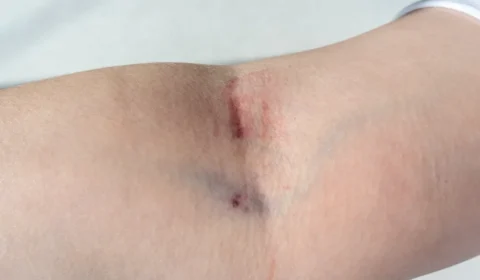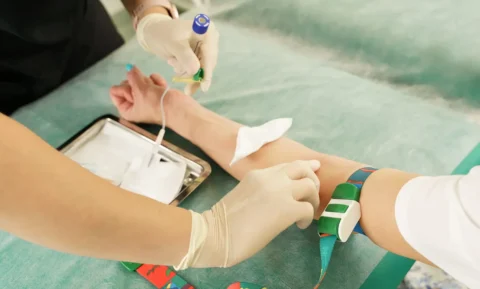Internal medicine physicians can use Botox to treat the symptoms of many conditions. Your training center or hospital can help you gain more knowledge about the toxin and its effects on patients. Once you finish your training, you’ll learn how to properly use Botox without violating any legalities.
So what’s it like to undergo Botox training for internal medicine physicians? Courses made specifically for medical professionals are widely available. These help doctors familiarize themselves with Botox treatments and their effects on patients. You’ll get a certification after you finish your training.
Requirements to Practice Botox
The requirements to use Botox vary per state. Internal medicine physicians can usually administer Botox injections, but only when deemed necessary to treat a particular illness. In many states, nurses and physician’s assistants can also inject Botox into the patient. If you usually have other healthcare personnel administer injections, it’s best to stay in the room to observe the procedure.
State Laws and Approvals for Botox Practitioners
Some states have specific laws regarding the use of Botox treatments. If you’re not sure about this, you can ask your hospital’s internal medicine department if there are specific guidelines for Botox. In case you’re working at a private practice, you can also check with the state’s medical board.
It’s important that you’re also aware of how other physicians can use Botox. You might be asked to attend to a patient presenting as a multi-disciplinary case. Remember that dentists and oral surgeons are usually allowed to use Botox, but the purpose has to fall under the following approved uses:
- Overactive bladder symptoms
- Urinary incontinence due to a neurological condition
- Chronic migraine lasting for more than 15 days a month
- Increased muscle stiffness
- Cervical dystonia symptoms (abnormal head and neck position)
- Strabismus (eye muscle problems) and blepharospasm (eyelid spasms)
Most internal medicine physicians will be allowed to administer Botox treatments by themselves. You may have to detail the use of the Botulinum toxin on an official report. You can also work with a dentist or oral surgeon who’ll prescribe and inject the Botox to a multi-disciplinary case. These specialists also have approval to use the medication for dental issues that fall under state requirements.
If you’ll have nurses or physician’s assistants inject Botox onto your patients, you’ll have to be present in the same room. Many states only allow these medical professionals to inject Botox when supervised by a licensed doctor or aesthetician. Even then, the administering professional should have the necessary certification and paperwork to proceed with treatment.
Some states, like Arizona and Texas, have strict training requirements. There are some training quota hours that you’ll have to fulfill before being considered for a license. These hours are usually split up into lectures and live demonstrations. Your training facility should also be state-accredited.
Certifications for Botox Centers
In many US states, Botox centers and medical spas need to be operated by a medical professional. This is a result of corporate laws that state that only medical professionals can be paid for health-related services. Even aesthetic treatments fall under this law, since fillers and toxins can only be used by licensed doctors, nurses, or assistants.
If you’re an internal medicine physician looking to work in a new facility, make sure to check if the owner is a licensed healthcare professional. If not, you can check if there are state laws dictating that ownership of a Botox center or practice should only be given to a doctor.
There are some exceptions to this rule, such as management service organizations (MSOs). MSOs can partner with medical companies to create a Botox-accredited center. In this arrangement, a non-medical company can co-own the facility alongside the medical physician or group. While the civilian group or entity doesn’t have full ownership, they’ll be able to control human resources, marketing, and payroll.
Further Training for Internal Medicine Physicians
Besides your initial medical school education, internships, and residency, you’ll have to undergo additional training to be Botox-accredited. Usually, a 1-day course is sufficient for a baseline knowledge of Botox administration. These short courses are facilitated by practicing professionals and come with certificates. But note that advanced Botox use requires more comprehensive training.
Accredited Workshops
There are many workshops you can join that discuss Botox treatments. For aesthetic treatments, the American Academy of Aesthetic Medicine (AAAM) and the American Board of Aesthetic Medicine (ABAM) hold routine workshops facilitated by licensed physicians. Many of their instructors also have backgrounds in internal medicine.
Additionally, the International Institute of Aesthetic Medicine has members who are also internal medicine physicians. Training from these entities will allow you to learn more about how Botox is used in multi-disciplinary cases. Many also come with reference texts and video lectures that you can use even after finishing the workshop.
If you’re looking to train your nursing staff, you can look into workshops from associations across the country. Some examples include the American Nursing Association (ANA). You can also look for workshops from other sources, such as online medical shops and distance learning schools.
To ensure proper accreditation for you and your staff, enroll in classes that have continuing medical education (CME) credits. Many institutions and platforms have CME-credited classes that are transferable to multiple states.
Comprehensive Medical Seminars
There are also comprehensive medical seminars that focus solely on new developments in Botox. These are focused on new developments regarding the treatment, such as off-label usage. Seminars aren’t certification programs, and attendance doesn’t grant you legal permission to demonstrate off-label purposes without approval from a medical and ethics board.
Medical seminars also allow you to learn more about ethical considerations. Open discussions and fora are incorporated into these seminars for doctors to share anecdotes and findings about the use of Botulinum toxin. You’ll also have the opportunity to look at recently published studies through live presentations.
Live Demonstrations for Certification
All certification courses will require you to successfully demonstrate a Botox treatment. You’ll undergo assessments overseen by the facilitators. In some states, these are equivalent to 24 cumulative hours. However, some courses only ask you to perform a limited number of training hours. You’ll have to take multiple courses to fulfill the quota.
Additionally, you can also ask if supervised procedures performed in a clinic or hospital can be credited. In some states, these can be submitted to a medical board for review. All submitted procedures should adhere to the FDA’s approved guidelines for therapeutic use. You can ask your local regulation board or accreditation center for more information.
Fellowship Programs
As an internal medicine physician, you’d have undergone a fellowship program after your residency. In some hospitals, fellows can observe Botox treatments administered to multi-disciplinary cases. If your patient has problems related to muscle spasms or excessive sweating, the toxin is sometimes prescribed for symptom management.
Your attending physician can allow you to assist in Botox treatments. If you’re an attending doctor, you’ll need to log your usage of the toxin accordingly. Make sure to tell any supervisors if you plan to have residents observe the treatment of your patient.
FACE Med Store: A One-Stop Shop for All Your Medical Tools
Internal medicine physicians can use Botox to treat the symptoms of many conditions. Your training center or hospital can help you gain more knowledge about the toxin and its effects on patients. Once you finish your training, you’ll learn how to properly use Botox without violating any legalities.
And if you’re looking for opportunities to learn more about skincare, we offer high-quality and accredited courses at FACE Med Store. We’ll help you learn more about skin booster injections, IV therapy, Surgitron equipment, and more. To learn more about our courses, you may browse our online training course collection. You can also contact us via email at info@facemedstore.com.






